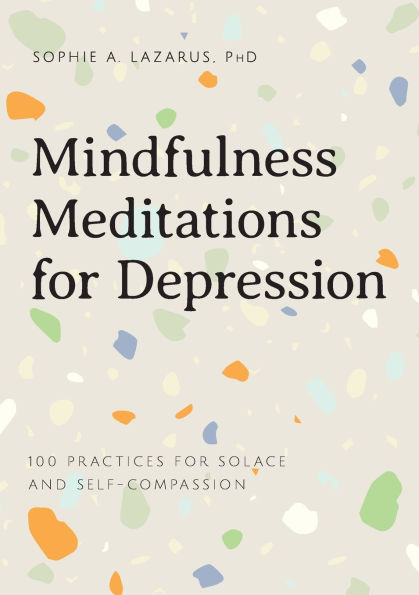Home
Conscious Creativity: Mindfulness Meditations
Barnes and Noble
Loading Inventory...
Conscious Creativity: Mindfulness Meditations in Bloomington, MN
Current price: $11.45


Conscious Creativity: Mindfulness Meditations in Bloomington, MN
Current price: $11.45
Loading Inventory...
Size: OS
"Conscious Creativity: Ancient Europe Mindfulness Meditations"
, by
Natasa Pantovic
, is a profound exploration of the intersection between ancient mystical traditions and the power of the subconscious mind. In this book, Pantovic delves into the fusion of Eastern and Western philosophies, focusing on how ancient civilizations, especially those in
Ancient Europe
, understood the mind, consciousness, and art.
Key Themes of
"Conscious Creativity"
1.
The Power of the Subconscious Mind
The book draws inspiration from both Eastern and Western traditions to explore the
subconscious mind
-referred to in Eastern philosophy as
Chitta
. This concept of the mind is central in many ancient philosophies, particularly in the teachings of
Plato
,
Pythagoras
Jung
, and
Patanjali
. These thinkers and mystics believed in the potential of the subconscious to connect individuals to higher realms of knowledge and creativity.
Pantovic emphasizes the
ascending spiral of consciousness
, a metaphor that reflects personal and spiritual growth. This spiral is symbolic of how one moves from lower states of awareness to higher, more refined states of being, resonating with
ancient gods
and tapping into universal wisdom.
2.
The Intersection of Ancient East and West
In
Platonism
Neo-Platonism
, and the mathematical teachings of
, the subconscious mind and higher consciousness were linked to the discovery of universal truths. Ancient Greek philosophers often saw the mind as a means of connecting to the divine or achieving knowledge through logical and philosophical inquiry. This is echoed in the mystical traditions of
Ancient Egypt
and other civilizations, where the subconscious mind was seen as a gateway to the divine and the metaphysical realms.
By integrating both
Eastern
meditation practices (like mindfulness) and
Western philosophical teachings
(like those of
and
), the book proposes a holistic view of
conscious living
that enables individuals to tap into their highest potential.
3.
Ancient European Civilization & Subconscious Wisdom
Pantovic brings attention to the
ancient civilizations of Europe
, particularly in
Malta
, which had a unique culture that flourished for over 1,500 years, from around
3500 BC to 2500 BC
. The
Temple Culture
of Malta constructed megalithic temples dedicated to the worship of the
Mother Goddess
Death
Creation
Dreams
. These sacred spaces were places for spiritual exploration, and no evidence of violence or warfare has been found in this society-indicating a peaceful, harmonious community that focused on artistic expression and spiritual growth.
The absence of weapons and the emphasis on peaceful worship of the goddess offer a fascinating lens through which to understand the deep connection between art, spirituality, and the subconscious in ancient societies.
4.
The Role of Art, Music, and Sound in Consciousness
Pantovic delves into how
art
music
can influence the subconscious mind. Ancient civilizations believed that by observing
sacred symbols
, engaging in ritual
prayers
, and listening to
sound frequencies
, individuals could align their inner vibrations with higher cosmic frequencies.
She explores the concept of
subconscious vibrations
and how they can be perceived through ancient art and music. By engaging with these creative forms, we are encouraged to activate both
hemispheres of the brain
, fostering a balanced and harmonious approach to creativity and spiritual growth.
, by
Natasa Pantovic
, is a profound exploration of the intersection between ancient mystical traditions and the power of the subconscious mind. In this book, Pantovic delves into the fusion of Eastern and Western philosophies, focusing on how ancient civilizations, especially those in
Ancient Europe
, understood the mind, consciousness, and art.
Key Themes of
"Conscious Creativity"
1.
The Power of the Subconscious Mind
The book draws inspiration from both Eastern and Western traditions to explore the
subconscious mind
-referred to in Eastern philosophy as
Chitta
. This concept of the mind is central in many ancient philosophies, particularly in the teachings of
Plato
,
Pythagoras
Jung
, and
Patanjali
. These thinkers and mystics believed in the potential of the subconscious to connect individuals to higher realms of knowledge and creativity.
Pantovic emphasizes the
ascending spiral of consciousness
, a metaphor that reflects personal and spiritual growth. This spiral is symbolic of how one moves from lower states of awareness to higher, more refined states of being, resonating with
ancient gods
and tapping into universal wisdom.
2.
The Intersection of Ancient East and West
In
Platonism
Neo-Platonism
, and the mathematical teachings of
, the subconscious mind and higher consciousness were linked to the discovery of universal truths. Ancient Greek philosophers often saw the mind as a means of connecting to the divine or achieving knowledge through logical and philosophical inquiry. This is echoed in the mystical traditions of
Ancient Egypt
and other civilizations, where the subconscious mind was seen as a gateway to the divine and the metaphysical realms.
By integrating both
Eastern
meditation practices (like mindfulness) and
Western philosophical teachings
(like those of
and
), the book proposes a holistic view of
conscious living
that enables individuals to tap into their highest potential.
3.
Ancient European Civilization & Subconscious Wisdom
Pantovic brings attention to the
ancient civilizations of Europe
, particularly in
Malta
, which had a unique culture that flourished for over 1,500 years, from around
3500 BC to 2500 BC
. The
Temple Culture
of Malta constructed megalithic temples dedicated to the worship of the
Mother Goddess
Death
Creation
Dreams
. These sacred spaces were places for spiritual exploration, and no evidence of violence or warfare has been found in this society-indicating a peaceful, harmonious community that focused on artistic expression and spiritual growth.
The absence of weapons and the emphasis on peaceful worship of the goddess offer a fascinating lens through which to understand the deep connection between art, spirituality, and the subconscious in ancient societies.
4.
The Role of Art, Music, and Sound in Consciousness
Pantovic delves into how
art
music
can influence the subconscious mind. Ancient civilizations believed that by observing
sacred symbols
, engaging in ritual
prayers
, and listening to
sound frequencies
, individuals could align their inner vibrations with higher cosmic frequencies.
She explores the concept of
subconscious vibrations
and how they can be perceived through ancient art and music. By engaging with these creative forms, we are encouraged to activate both
hemispheres of the brain
, fostering a balanced and harmonious approach to creativity and spiritual growth.
"Conscious Creativity: Ancient Europe Mindfulness Meditations"
, by
Natasa Pantovic
, is a profound exploration of the intersection between ancient mystical traditions and the power of the subconscious mind. In this book, Pantovic delves into the fusion of Eastern and Western philosophies, focusing on how ancient civilizations, especially those in
Ancient Europe
, understood the mind, consciousness, and art.
Key Themes of
"Conscious Creativity"
1.
The Power of the Subconscious Mind
The book draws inspiration from both Eastern and Western traditions to explore the
subconscious mind
-referred to in Eastern philosophy as
Chitta
. This concept of the mind is central in many ancient philosophies, particularly in the teachings of
Plato
,
Pythagoras
Jung
, and
Patanjali
. These thinkers and mystics believed in the potential of the subconscious to connect individuals to higher realms of knowledge and creativity.
Pantovic emphasizes the
ascending spiral of consciousness
, a metaphor that reflects personal and spiritual growth. This spiral is symbolic of how one moves from lower states of awareness to higher, more refined states of being, resonating with
ancient gods
and tapping into universal wisdom.
2.
The Intersection of Ancient East and West
In
Platonism
Neo-Platonism
, and the mathematical teachings of
, the subconscious mind and higher consciousness were linked to the discovery of universal truths. Ancient Greek philosophers often saw the mind as a means of connecting to the divine or achieving knowledge through logical and philosophical inquiry. This is echoed in the mystical traditions of
Ancient Egypt
and other civilizations, where the subconscious mind was seen as a gateway to the divine and the metaphysical realms.
By integrating both
Eastern
meditation practices (like mindfulness) and
Western philosophical teachings
(like those of
and
), the book proposes a holistic view of
conscious living
that enables individuals to tap into their highest potential.
3.
Ancient European Civilization & Subconscious Wisdom
Pantovic brings attention to the
ancient civilizations of Europe
, particularly in
Malta
, which had a unique culture that flourished for over 1,500 years, from around
3500 BC to 2500 BC
. The
Temple Culture
of Malta constructed megalithic temples dedicated to the worship of the
Mother Goddess
Death
Creation
Dreams
. These sacred spaces were places for spiritual exploration, and no evidence of violence or warfare has been found in this society-indicating a peaceful, harmonious community that focused on artistic expression and spiritual growth.
The absence of weapons and the emphasis on peaceful worship of the goddess offer a fascinating lens through which to understand the deep connection between art, spirituality, and the subconscious in ancient societies.
4.
The Role of Art, Music, and Sound in Consciousness
Pantovic delves into how
art
music
can influence the subconscious mind. Ancient civilizations believed that by observing
sacred symbols
, engaging in ritual
prayers
, and listening to
sound frequencies
, individuals could align their inner vibrations with higher cosmic frequencies.
She explores the concept of
subconscious vibrations
and how they can be perceived through ancient art and music. By engaging with these creative forms, we are encouraged to activate both
hemispheres of the brain
, fostering a balanced and harmonious approach to creativity and spiritual growth.
, by
Natasa Pantovic
, is a profound exploration of the intersection between ancient mystical traditions and the power of the subconscious mind. In this book, Pantovic delves into the fusion of Eastern and Western philosophies, focusing on how ancient civilizations, especially those in
Ancient Europe
, understood the mind, consciousness, and art.
Key Themes of
"Conscious Creativity"
1.
The Power of the Subconscious Mind
The book draws inspiration from both Eastern and Western traditions to explore the
subconscious mind
-referred to in Eastern philosophy as
Chitta
. This concept of the mind is central in many ancient philosophies, particularly in the teachings of
Plato
,
Pythagoras
Jung
, and
Patanjali
. These thinkers and mystics believed in the potential of the subconscious to connect individuals to higher realms of knowledge and creativity.
Pantovic emphasizes the
ascending spiral of consciousness
, a metaphor that reflects personal and spiritual growth. This spiral is symbolic of how one moves from lower states of awareness to higher, more refined states of being, resonating with
ancient gods
and tapping into universal wisdom.
2.
The Intersection of Ancient East and West
In
Platonism
Neo-Platonism
, and the mathematical teachings of
, the subconscious mind and higher consciousness were linked to the discovery of universal truths. Ancient Greek philosophers often saw the mind as a means of connecting to the divine or achieving knowledge through logical and philosophical inquiry. This is echoed in the mystical traditions of
Ancient Egypt
and other civilizations, where the subconscious mind was seen as a gateway to the divine and the metaphysical realms.
By integrating both
Eastern
meditation practices (like mindfulness) and
Western philosophical teachings
(like those of
and
), the book proposes a holistic view of
conscious living
that enables individuals to tap into their highest potential.
3.
Ancient European Civilization & Subconscious Wisdom
Pantovic brings attention to the
ancient civilizations of Europe
, particularly in
Malta
, which had a unique culture that flourished for over 1,500 years, from around
3500 BC to 2500 BC
. The
Temple Culture
of Malta constructed megalithic temples dedicated to the worship of the
Mother Goddess
Death
Creation
Dreams
. These sacred spaces were places for spiritual exploration, and no evidence of violence or warfare has been found in this society-indicating a peaceful, harmonious community that focused on artistic expression and spiritual growth.
The absence of weapons and the emphasis on peaceful worship of the goddess offer a fascinating lens through which to understand the deep connection between art, spirituality, and the subconscious in ancient societies.
4.
The Role of Art, Music, and Sound in Consciousness
Pantovic delves into how
art
music
can influence the subconscious mind. Ancient civilizations believed that by observing
sacred symbols
, engaging in ritual
prayers
, and listening to
sound frequencies
, individuals could align their inner vibrations with higher cosmic frequencies.
She explores the concept of
subconscious vibrations
and how they can be perceived through ancient art and music. By engaging with these creative forms, we are encouraged to activate both
hemispheres of the brain
, fostering a balanced and harmonious approach to creativity and spiritual growth.

















